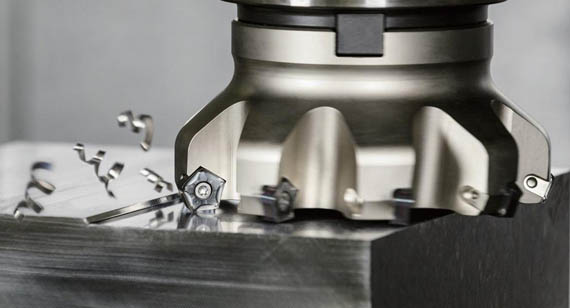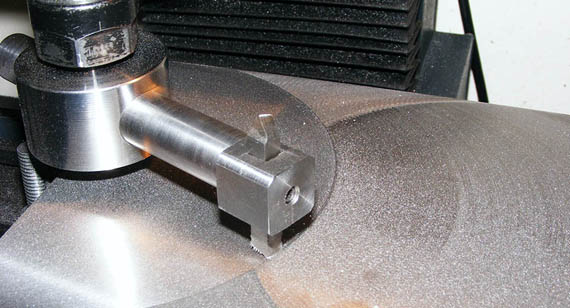15 years one-stop China custom CNC machining parts factory
 493 |
Published by VMT at Sep 03 2024
493 |
Published by VMT at Sep 03 2024
Flying cutters, also known as fly cutters, are essential tools in the world of CNC machining. They are used to produce smooth, flat surfaces on a workpiece, often with high precision and at a lower cost compared to other cutting tools. This guide provides an in-depth look at flying cutters, their types, components, specifications, and uses, as well as their advantages and how they compare to other cutting tools like face milling cutters. By understanding the various aspects of flying cutters, manufacturers and machinists can make informed decisions, ensuring the highest quality and efficiency in their CNC machining projects.

A flying cutter, or fly cutter, is a single-point cutting tool used primarily in milling operations to produce flat surfaces on a workpiece. Unlike traditional milling cutters, which have multiple cutting edges, a fly cutter typically has one or two cutting edges mounted on a rotating arm. This design allows the tool to cover a larger surface area in a single pass, making it highly efficient for machining large, flat surfaces. Fly cutters are particularly useful in operations requiring a fine finish and are commonly employed in custom CNC machining, where precision and surface quality are paramount.
Flying shears, another term often used interchangeably with flying cutters, come in various types, each suited for specific applications and machining requirements. The main types of flying shears include point cutting, rotary cutting tools, and rotary engraving tools.
Point Cutting: Point cutting fly cutters use a single-point cutting tool to remove material from the workpiece. This type is ideal for producing a smooth finish on large, flat surfaces. The simplicity of the design allows for easy adjustment of the cutting depth and angle, making it versatile for different machining tasks.
Rotary Cutting Tools: Rotary cutting tools in fly cutters are used for more aggressive material removal. These tools are designed to cut at higher speeds and are suitable for roughing operations where a significant amount of material needs to be removed quickly. Rotary cutting tools are commonly used in heavy-duty CNC machining services.
Rotary Engraving Tools: Rotary engraving tools are specialized fly cutters used for engraving patterns or text on the surface of a workpiece. These tools require precise control over the cutting parameters to achieve the desired depth and clarity of the engraving. They are widely used in applications where detailed surface work is needed, such as in the production of precision CNC machined parts.
Understanding the components and specifications of a flying cutter is essential for selecting the right tool for a specific milling operation. A typical flying cutter is composed of several key components that work together to achieve precise cutting results.
Components of Flying Cutters
A typical flying shear consists of the following parts:
Cylinder: The cylinder is the central part of the fly cutter, around which the cutting tool rotates. It is connected to the machine spindle and is responsible for the stability and balance of the cutter during operation.
Holder: The holder secures the cutting tool in place and allows for adjustments to the cutting angle and depth. The holder’s design can vary depending on the type of fly cutter and the specific machining requirements.
Thrust Washer: The thrust washer is used to reduce friction between the moving parts of the fly cutter. It helps maintain smooth operation and extends the tool's life by preventing wear on critical components.
Fastener: Fasteners, such as screws or bolts, are used to secure the cutting tool and other components in place. They ensure that the tool remains stable during machining, preventing any movement that could affect the cutting accuracy.
Draw Bolt: The draw bolt is used to tighten the fly cutter onto the machine spindle. It ensures that the cutter is securely attached, minimizing vibration and maintaining precision during operation.
Left-Hand Carbide Tool: The cutting tool itself is often made of carbide, known for its hardness and durability. A left-hand carbide tool is one option used in fly cutters for certain types of cuts, providing a sharp edge that maintains its integrity over prolonged use.
Conclusion
The components of a flying cutter are designed to work together to provide a stable, precise, and efficient cutting tool for various machining operations. By understanding these components and their functions, machinists can select the appropriate flying cutter for their specific needs, ensuring optimal performance in their CNC machining projects.
Flying cutters come in various specifications and dimensions, depending on the application and the machine being used. The diameter of the cutter, the length of the cutting edge, and the tool's overall weight are critical factors that influence its performance. Typically, larger diameter fly cutters are used for machining large surfaces, while smaller cutters are preferred for more delicate work. The cutting tool's material, such as carbide or high-speed steel, also impacts its durability and cutting efficiency. Additionally, the spindle speed and feed rate must be carefully matched to the fly cutter's specifications to achieve the best results.
Flying cutters and face milling cutters are both used for producing flat surfaces, but they differ significantly in their design, application, and performance characteristics.

Number of Blades: Face milling cutters typically have multiple cutting edges, allowing for faster material removal and higher feed rates. In contrast, fly cutters generally have one or two cutting edges, making them slower but more precise for finishing operations.
Finishing Quality: Fly cutters are often preferred for finishing operations where a fine surface finish is required. The single-point cutting action reduces the likelihood of tool marks, resulting in a smoother finish compared to face milling cutters, which can leave multiple tool marks due to their multiple cutting edges.
Cutting Requirements: Face milling cutters are better suited for heavy-duty roughing operations where large amounts of material need to be removed quickly. Fly cutters, on the other hand, excel in operations where precision and surface quality are more important than speed.
Cost: Fly cutters are generally less expensive to manufacture and maintain compared to face milling cutters, making them a cost-effective option for many machining operations, especially when high precision is required.
To achieve the best results when using fly cutters for finishing surfaces, certain precautions should be taken.

Fly Cutter Care: Proper maintenance of the fly cutter is essential to ensure its longevity and performance. This includes regular inspection of the cutting edge, ensuring it is sharp and free of chips or wear. The tool should also be cleaned after each use to remove any material buildup that could affect its balance and cutting accuracy.
Point Radius: The point radius of the cutting tool should be carefully selected based on the desired surface finish. A larger radius can help reduce tool marks and produce a smoother finish, while a smaller radius may be needed for more detailed work.
Workpiece Type: The material of the workpiece plays a significant role in determining the appropriate cutting parameters. Softer materials may require a higher spindle speed and lighter cuts, while harder materials may need slower speeds and deeper cuts. It's also important to consider the workpiece's geometry, as complex shapes may require adjustments to the cutting path or tool orientation.
Fly cutters are versatile tools used in a wide range of applications across various industries. They are commonly employed in the machining of large, flat surfaces, such as in the production of machine bases, plates, and molds. Fly cutters are also used in finishing operations where a high-quality surface finish is required, such as in the aerospace and automotive industries. In addition, fly cutters are often used in custom CNC machining projects where precision and surface integrity are critical. Their ability to produce a consistent, smooth finish makes them a valuable tool in any CNC machining factory.
At VMT, we understand the importance of selecting the right tool for your milling project. Whether you need a fly cutter for precision finishing or a face milling cutter for heavy-duty roughing, our team of experts is here to help. We offer a wide range of CNC machining services, including CNC prototype machining and custom CNC machining, to meet your specific needs. With our state-of-the-art equipment and experienced machinists, we ensure that your project is completed with the highest level of precision and quality.

Fly cutters are essential tools in CNC machining, offering precision and efficiency for a variety of milling operations. By understanding the types, components, specifications, and applications of fly cutters, machinists can make informed decisions that lead to better outcomes in their machining projects. Whether you're working on large surfaces or need a high-quality finish, fly cutters provide the versatility and precision needed to achieve your goals.

What Are Flying Shears Used For?
Flying shears, or fly cutters, are used to machine flat surfaces, typically on large workpieces. They are also used for finishing operations to achieve a smooth, high-quality surface finish.
How to Choose a Milling Cutter?
Choosing the right milling cutter depends on the material of the workpiece, the desired surface finish, the machining operation, and the machine's capabilities. Fly cutters are ideal for precision finishing, while face milling cutters are better for heavy-duty roughing.
Why Should You Generally Avoid Down Milling?
Down milling can cause the cutter to dig into the workpiece, leading to poor surface finish and potential damage to the cutter. Up milling is generally preferred to avoid these issues.
Can You Cut a Hole with a Fly Cutter?
While fly cutters are not typically used for cutting holes, they can be used to enlarge existing holes or to create large, flat-bottomed recesses.
What Is the Difference Between a Fly Cutter and an End Mill?
A fly cutter has a single cutting edge and is used for machining flat surfaces, while an end mill has multiple cutting edges and is used for cutting slots, pockets, and complex geometries. Fly cutters are preferred for fine finishing, while end mills are used for more detailed and varied machining tasks.
This guide provides comprehensive insights into fly cutters, helping you understand their role in CNC machining and how to select and use them effectively for your projects. Whether you are involved in CNC prototype machining or large-scale production, understanding fly cutters will enhance your machining capabilities and the quality of your CNC machined parts.
